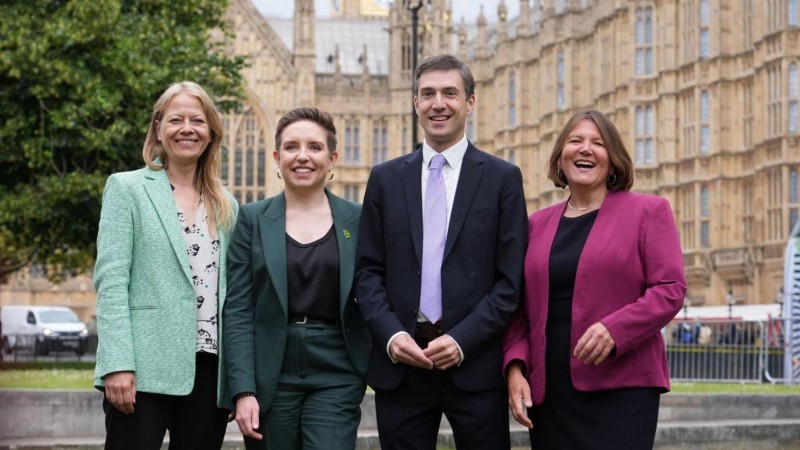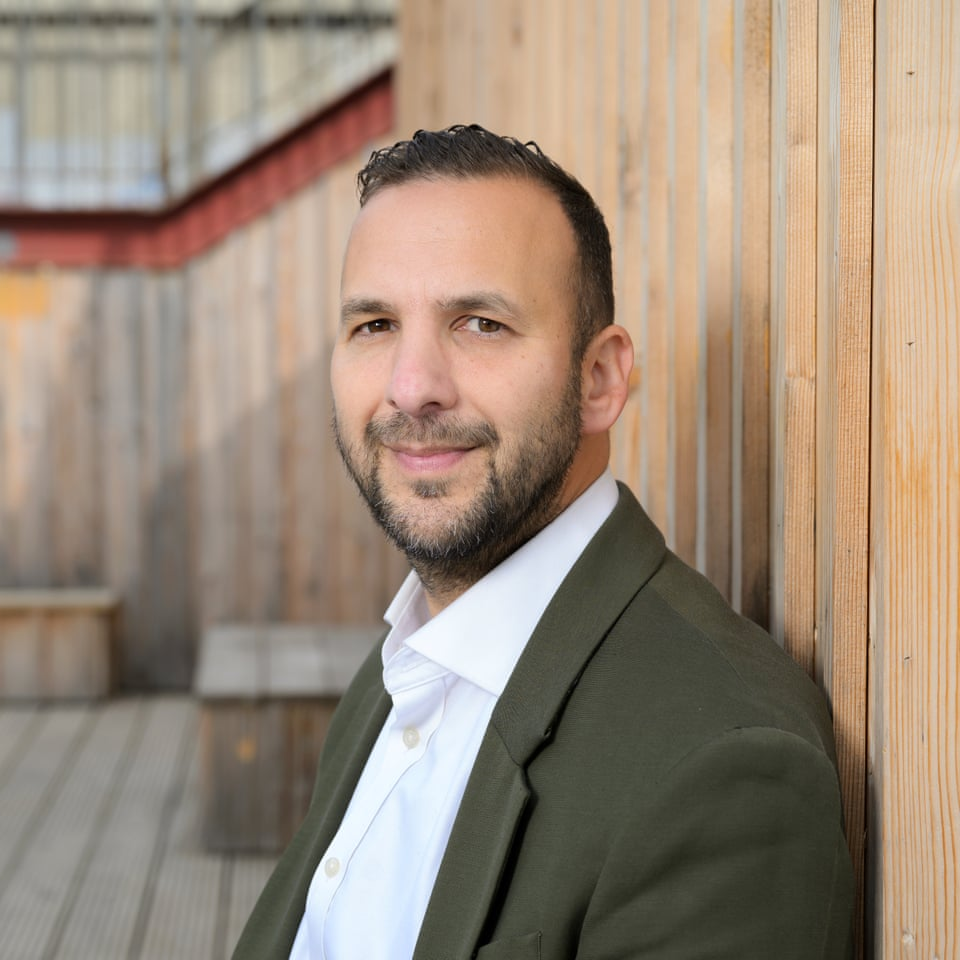The Green Party In Power? What Needs to Change

England has a few major political parties, yet it’s surprising considering the huge issues we have with climate change, that The Green Party still only has four MPs.
It’s interesting that despite climate change arguably being the most important issue worldwide (if our planet disappears, everything else is irrelevant), Reform has made more inroads in a few years, than the Green Party in England has in decades. People do care – so why is this?
Let’s be optimistic. Greens only have to double their membership to be on a level playing field with Reform. And with the recent election of the charismatic and effective leader Zach Polanski, this looks highly likely.
Climate change is now the most pressing issue on earth, yet still it’s not taken seriously enough to warrant people voting for politicians who are working to try to stop it.
Yet Greens are not just about saving the planet, but also about fairness, new voting systems, animal welfare, human rights, compassion and alternatives to economic growth.
Of course, Greens are not the only political party concerned with the planet. Lib Dems have pretty good policies, and there are also many independent politicians. But to make real changes that could benefit our planet, it would help if we at least had a few Green ministers, like abroad.
The Power of Local Connections
Greens think more about local power and grassroots action than national and international policies. From local parks to cycling cities, Greens are more focused on litter clean-ups and cleaner rivers and seas, than economic growth, chain stores and big banks.
Having said that, some Green councils have been heavily criticised for not improving recycling rates (one even destroyed a bird habitat to build a cycle path, which was met with horror by local residents.
And Greens are also fans of the EU, which is anything but local:
The EU violates just about every green principle going. It is the opposite of local; it is destructive to the natural world; it wipes out cultural distinctiveness. It is anti-democratic, it puts the interests of banks and corporations before the interests of its working people.
Why – when – how – did the Green movement abandon its commitment to localism and democracy, and jump into bed with a beast like this? Paul Kingsnorth
Learning from Finland’s Green Success
Finland (a country with happy people and the world’s cleanest air) is also known for its honest politics (people trust the MPs!) The Finnish Green Party is very successful here, and have been part of a national coalition, which brought in wildlife protection rules.
New Zealand Greens in Government
Aotearoa New Zealand also has Greens in government, with ministerial jobs. This is partly due to fairer voting systems, so it’s easier to elect Green MPs. Compared with the UK that still has the antiquated ‘first past the post’ system, to keep big parties entrenched in power. It’s already:
- Created thousands of nature-based jobs
- Improved fair deals for renters
- Ended new offshore gas & oil exploration
The party currently has 15 MPs, quite a large proportion for a small country and population. Many of Maori descent.
The Australian Greens also have MPs in parliament, although there is controversy over the expulsion of the co-founder, for expressing his views on the transgender movement. It’s a shame that personal issues that people could respectfully disagree on, are deemed more important than focusing on their very good policies:
- Free medical and dental care
- Lower mortgages and fair banking
- Affordable homes and capping rent increases
- Make supermarket price gouging illegal
- Free university education
- End native forest logging
- Free school lunches
The Aussie Greens leader Adam Bandt recently lost his seat, citing the Trump effect. He’s more concerned that climate change is now being seen as a political issue, rather than the serious non-political issue it is.
And is pleading with the media, to stop reporting on Trump’s lies, as if they are truth.
What About England’s Green Party?

So what’s happening back at home? Former leader Caroline Lucas now has resigned, and gives speeches and has written a book on compassionate patriotism.
At time of writing (July 2025), The Green Party has four elected MPs, two members of the House of Lords, three London Assembly members and over 800 seats on 170 councils. But that’s not really many, compared to other political parties.
However the four MPs have good credentials, and knowledge. Rather than just being ‘token MPs’ that were either interns or recruited to become an MP, just for the sake of it:
Carla Denyer studied mechanical engineering at Durham University, and is an expert on climate change and renewable energy. She is stepping down as co-leader, to throw her weight into being a local MP for Bristol.
Adrian Ramsay was former chief executive of the Centre for Alternative Energy, then worked for a charity that focused on carbon-free homes (he also has a first-class degree in politics).
Ellie Chowns studied geography, environmental and developmental studies, and has campaigned for clean rivers in Herefordshire.
She says that Greens are well-liked, and has ambitions for Greens to play a role in a likely hung parliament (after the fudge-up that Labour has made of their massive majority) at the next election.
Siân Berry is also an engineer (and former sustainable transport campaigner). And former candidate for London mayor.
She has recently reintroduced Ella’s Law back to parliament, a Bill to get air pollution listed as a cause of death, after 9-year old Ella Adoo-Kissi-Debrah died of a fatal asthma attack.

New leader Zack Polanski is a gay vegan Jew, so can create peace across all bridges! His popularity has seen Green Party membership increase, known as the ‘Polanski surge’. And if that doesn’t already make you feel good, his partner works in a hospice, helping peaceful ends for dying patients.
A former actor and hypnotherapist, he is the son of a hardware shop proprietor, often parodying the ‘I’m from working-class stock’, by saying ‘I’m not the son of a tool maker, I’m the son of a tool seller!’
He believes that at the next election, Labour is going to lose seats due to silly decisions since being in power, and is hoping for Greens to get from 30 to 60 seats.
If you read interviews, Zack is an interesting character, who has lots of positive hopes for the future of Green politics. And interestingly, he is quite sympathetic to those who vote Reform, and has ideas to get them on board.
He is encouraged by recent research already, that shows that more young women vote for Greens, than Reform, though the media never reports this.
He’s also confident that due to Labour having messed everything up since they were given a ‘golden wand’ at the last election, it will be pretty easy to win seats from them, in left-leaning constituencies.
Labour is going to lose seats. They’re either going to lose them to Reform, or to us. I want to see Keir Starmer leaning to the left, because then we can all be winning. Do I think he will? No, I think he’s too far gone. But it’s time to turn this country around and stop cruel government, that is absolutely in the pockets of the super-rich.
I think 99% of people can unite under the Green Party umbrella, and I think that’s exactly how we’ll grow in the same way that Reform has. A party of millionaires representing the interests of billionaires, but claiming to be the voice of the working class. With the right message, we can absolutely speak to Reform voters.
If that seems odd to people, there’s lots of evidence that many people who supported Bernie Sanders, ended up voting for Donald Trump. I’m as much of a patriot as Nigel Farage. I care about this country and its communities. To tackle a crisis, we need to grow communities. We need to protect jobs, and make sure that people have dignity and fair pay at work.
Green Parties Around the World

Why do Greens win seats in some countries while struggling in others? A closer look gives us clues. Some Green leaders have managed real gains, whether by luck, skill, or smart timing. Factors like voting systems and press coverage play huge parts in how far the Greens can go.
How Voting Systems Make or Break Green Parties
Voting rules matter more than most people realise. In places like the UK, Canada, and the US, the first-past-the-post system puts smaller parties at a big disadvantage. Here’s why: only the party with the most votes in each area gets a seat. If Greens win 15% everywhere but top the poll nowhere, they end up with little or nothing.
Just look at England. The Green Party regularly gets over a million votes, yet only Caroline Lucas (now retired from politics) and four MPs have managed to win actual seats in Westminster. Sian Berry, Zack Polanski, and Ellie Chowns all hold notable roles in devolved assemblies or local councils, but breakthroughs in national government are rare.
Similar stories play out in Canada, where Elizabeth May became a household name by snagging a rare Green seat in parliament, and in the US, where Green wins remain almost unheard of at the top level. This is because US politics is barmpot, almost set up so no-one can win, unless a Republican or Democrat.
One voice is tiny. And alone it cannot be heard above the din of politics, as usual. The people’s voice, when it cries as one, is a great roar. Ross Perot (independent US Presidential candidate).
A politics of struggle is rooted in values, vision and above all trust. It doesn’t say ‘Vote for me and I’ll fix everything’. It says ‘If I get elected, I will not just work for you, I will work with you. When citizens recognise this, they build stronger movement that is about transforming a city, a nation and maybe the world. Bernie Sanders (independent US presidential candidate)
If you can’t put your values into your vote, we don’t have a democracy. Dr Jill Stein (2024 Green Party presidential candidate, who placed third place in the popular vote, but her party won no seats, due to unfair voting systems).
The only difference between Republic and Democratic parties, is the velocities with which their knees hit the floor, when corporations knock on their door. Ralph Nader (independent Presidential candidate)
Contrast this with proportional systems used in countries like New Zealand, Australia, and across much of Scandinavia. Proportional voting means if you get 10% of the vote, you get about 10% of the seats. This gives Green parties a real shot at forming blocks in parliament, building momentum, and playing kingmaker in coalitions. It also helps them attract more candidates and voters who want their efforts to count for something.
Here’s a simple comparison:
In the UK, the first-past-the-post system has elected four Green MPs. In the spirit if fairness, it also is true that Reform also had a wide share of the vote, and only got 5 MPs. Yet despite Labour gaining a thumping majority, it received a lower vote share than any party forming a post-war majority government.
And look at what they have done so far with their immense power (destroying wildlife for affordable homes that could be built elsewhere, cosying up with those who oversee genocide, licking the boots of Trump and causing havoc by scrapping the Winter Fuel Allowance etc).
In Canada, the Greens are very popular, yet leader Elizabeth May’s election was a surprise, again due to the first-past the post system.
In the USA, the status quo system almost designed to prevent any new parties, means there are only a few local officials (not even federal seats) to counter Trump’s ‘drill, drill, drill’ policy, which will cause environmental havoc, likely more hurricanes and floods, and could send polar bears extinct.
In New Zealand and Australia, there are fairer voting systems. This has resulted in Greens being a major part of the political system (as popular and successful say as the Lib Dems in England), and many are in government coalitions, the same as in Scandinavia).
Proportional systems help turn popular support into real seats, while the UK, US, and Canada see Greens stuck behind unfair barriers. The type of voting system decides whether the Green surge is a ripple or a wave.
Media Bias and Lack of Coverage
It’s not just the rules of the vote that stop Greens. Media attention can be the lifeblood or the death sentence for small parties. Greens often find themselves squeezed out of election debates or left until last in news coverage. When main broadcasters or newspapers ignore smaller players, it echoes in the ballot box.
It’s not unusual to see a program like Question Time give seats to the major three political parties (and often now Reform) with the ‘extra’ panellist being a commentator or celebrity (despite Greens only have one parliament seat less than Reform).
Even now, Green voices like Carla Denyer, Adrian Ramsay, Sian Berry, and Ellie Chowns often see their policies cut from headlines or discussed as “single-issue” topics. Despite Greens having many other policies like alternatives to economic growth, fairer alternatives to council tax and plans for walkable community and public health.
It happens in Canada too, with Elizabeth May often side-lined in major debates or given less air time. In the US, Greens rarely appear at national debates or in major press coverage, keeping their profile low outside local circles.
Why does this matter so much? Because media gives public permission to take a party seriously. When journalists, hosts, and analysts focus only on the two big parties, the Greens become an afterthought. That makes it harder to attract donations, volunteers, and votes. It’s a feedback loop that’s tough to break.
So, when Greens win seats, it’s not just down to their policies or leaders. Voting systems and media coverage can set the stage for small parties to either wither or thrive. When these two factors align with public concern about the environment, Greens can leap ahead. When they don’t, it’s an uphill struggle.
Public Perception and ‘Single Issue’ Stereotype
The Green Party’s focus on climate and nature has built its core group of supporters, but it has also boxed the party into a ‘single issue’ image. For many voters, the Greens are still seen as the “environment party”—good for planting trees and stopping pollution, but less trusted on subjects like the economy, health, or national security.
This is a big reason why broader appeal has trailed behind. When voters head to the polls, top worries often revolve around jobs, wages, or the NHS, not just climate. If people believe Greens care about only one thing, it becomes tougher to win support in areas hit hardest by the cost of living or cuts to public services.
The Greens have started to shift this view. Now, their national and local campaigns highlight:
- Jobs and green industry, promising new roles in clean energy and repairs.
- Cost of living solutions, such as home insulation and fairer energy prices.
- Stronger, properly funded healthcare, linking well-being to a healthy planet.
‘Greenwashing’ by Larger Parties
Another big hurdle for the Greens is the behaviour of bigger parties. Over the last decade, promising action on climate has become standard practice. Parties like Labour, the Liberal Democrats, and even the Conservatives now talk up plans to plant trees, reach net zero, or push for electric cars. On the surface, this sounds like a win for green ideas.
But this tactic—often called ‘greenwashing’ in politics—cuts both ways. On one hand, it nudges the conversation and keeps climate on the agenda. On the other, these promises are rarely kept up once in power or get watered down for short-term gain. For example, main parties might talk up a green industrial revolution, only to stall on wind farms or approve new oil fields as soon as things get tough.
This competition makes life tricky for Green parties:
- It blurs the difference for voters. If all parties talk green, fewer see the need for a standalone Green Party.
- Disappointed voters lose trust in all parties when green promises don’t match real action.
You have stolen my dreams and my childhood, with your empty words. And yet I’m one of the lucky ones. People are suffering. People are dying. Entire ecosystems are collapsing. We are in the beginning of a mass extinction.
And all you can talk about is money and fairy-tales of eternal economic growth. How dare you! Greta Thuberg (who knows her climate science a lot better than most MPs).
How Can Greens Gain Seats?
The Greens often get boxed in as the “climate party”, but their success in other countries shows this doesn’t have to be the case. Voters care about their jobs, homes, health, and neighbourhoods as much as they do about pollution and global warming. When Greens talk about these bread-and-butter issues, they start to open doors that were once closed.
Here’s how the Greens can broaden their appeal:
- Jobs and Fair Wages: By offering plans for new roles in green tech, renewable energy, and sustainable farming, Greens in the UK and Australia have shown voters that going green can mean more work, not less. In Canada, the party has linked green jobs with well-paid, union-backed careers.
- Affordable Housing: Aussie Greens have put secure, affordable homes at the centre of their platform. Their push to end rental stress and boost social housing has pulled in support beyond their usual fans. Focusing on council-backed eco housing and cheaper rents.
- Healthcare and Social Justice: In Canada, Green MPs back access to family doctors and mental health care for all. UK Greens tie health to clean air, low bills, and warm homes. This bigger approach connects the dots between health, poverty, and the climate.
Building Trust and Winning Over New Voters
Winning these doubters takes more than bold talk; it calls for practical, believable plans that make sense for regular families and workers. Here’s how Greens can build trust and win new votes:
- Offer Clear, Simple Solutions: Avoid jargon and keep messages short. Explain how climate action means warmer homes, lower costs, better health, and safe jobs. Make it personal, not just global.
- Show Real Results: Point to local wins. When in local government, Greens have often improved parks, slashed bills, and launched insulation projects (one or two successes have turned into disasters, with silly decisions – something to learn and move on from). Voters trust what they can see.
- Back Up Big Promises: Lay out how plans will be funded. Whether it’s a windfall tax or incentives for green homes, details beat dreamy headlines every time.
- Work with Communities: Listen as much as talk. The strongest Green councillors and MPs connect through surgeries, public meetings, and door-knocks. They’re seen as locals, not just campaigners.
A list of core trust-builders could look like this:
- Be open about costs and benefits.
- Connect policies with local needs, not just ideals.
- Keep promises simple and realistic.
- Use proof from Green-run councils and MPs.
- Champion clear wins like cleaner air, safer streets, and fairer bills.
With these changes, Greens can move from being the “nice-to-have” party to a real alternative in the eyes of more voters. They become the party people choose not just out of worry, but out of hope for practical change.






